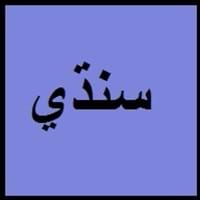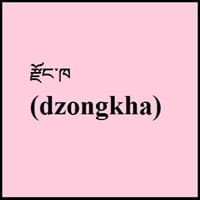Sindhi and Dzongkha
Countries
India, Pakistan
Bhutan
National Language
India, Pakistan, Sindh
Bhutan
Second Language
Not spoken in any of the countries
India
Speaking Continents
Asia
Asia
Minority Language
Not spoken in any of the countries
India
Regulated By
National Council For Promotion Of Sindhi Language, Sindhi Language Authority
Dzongkha Development Commission
Interesting Facts
- The first writings of Sindhi language were found in 8th century CE.
- In Sindhi language, every woord ends in a vowel.
- Standard romanization of the Dzongkha language is Roman Dzongkha.
Similar To
Gujarati
Sikkimese Language
Derived From
Prakrit Language
Tibetan Language
Alphabets in
Sindhi-Alphabets.jpg#200
Dzongkha-Alphabets.jpg#200
Scripts
Arabic, Devanagari
Dzongkha Braille, Tibetan Braille
Writing Direction
Right-To-Left, Horizontal
Not Available
Hello
Assalam O Alaikum
Kuzoozangpo La
Thank You
Meharbani
Kaadinchhey La
How Are You?
Kehra haal aahin
Ga Day Bay Zhu Yoe Ga ?
Good Night
tava kia aayo
lek shom ay zim
Good Evening
Sham Jo Salam
Not Available
Good Afternoon
Assalam o Alaikum
Not Available
Good Morning
Subho Bakhair
Not Available
Please
Mehrbani
Not Available
Sorry
Moon khe afsos aahe
Tsip maza
Bye
Allah Wahi
Log Jay Gay
I Love You
Man tokhe prem karyan ti
Nga cheu lu ga
Excuse Me
Maaf Kajo
Tsip maza
Where They Speak
Upper Sindh
Bhutan
How Many People Speak
Not Available
Where They Speak
Central Sindh
Bhutan
How Many People Speak
Not Available
Where They Speak
Lower Sindh
Bhutan
Total No. Of Dialects
Not Available
Speaking Population
Not Available
Second Language Speakers
Not Available
Native Name
Not Available
རྫོང་ཁ (dzongkha)
Alternative Names
Not Available
Bhotia of Bhutan, Bhotia of Dukpa, Bhutanese, Drukha, Drukke, Dukpa, Jonkha, Rdzongkha, Zongkhar
French Name
sindhi
dzongkha
German Name
Sindhi-Sprache
Dzongkha
Pronunciation
Not Available
Not available
Ethnicity
Not Available
Ngalop people
Origin
711 A.D
17th Century
Language Family
Indo-European Family
Sino-Tibetan Family
Subgroup
Indo-Iranian
Not Available
Branch
Indic
Tibeto-Burman
Early Forms
Not Available
No early forms
Standard Forms
Sindhi
Dzongkha
Language Position
Not Available
Signed Forms
Not Available
Not Available
Scope
Individual
Individual
ISO 639 6
Not Available
Not Available
Glottocode
sind1272
nucl1307
Linguasphere
No data available
No data Available
Language Type
Living
Living
Language Linguistic Typology
Subject-Object-Verb
Not Available
Language Morphological Typology
Not Available
Not Available
All Sindhi and Dzongkha Dialects
Most languages have dialects where each dialect differ from other dialect with respect to grammar and vocabulary. Here you will get to know all Sindhi and Dzongkha dialects. Various dialects of Sindhi and Dzongkha language differ in their pronunciations and words. Dialects of Sindhi are spoken in different Sindhi Speaking Countries whereas Dzongkha Dialects are spoken in different Dzongkha speaking countries. Also the number of people speaking Sindhi vs Dzongkha Dialects varies from few thousands to many millions. Some of the Sindhi dialects include: Siraiki, Vicholi. Dzongkha dialects include: Laya , Lunana. Also learn about dialects in South American Languages and North American Languages.
Sindhi and Dzongkha Speaking population
Sindhi and Dzongkha speaking population is one of the factors based on which Sindhi and Dzongkha languages can be compared. The total count of Sindhi and Dzongkha Speaking population in percentage is also given. The percentage of people speaking Sindhi language is 0.39 % whereas the percentage of people speaking Dzongkha language is Not Available. When we compare the speaking population of any two languages we get to know which of two languages is more popular. Find more details about how many people speak Sindhi and Dzongkha on Sindhi vs Dzongkha where you will get native speakers, speaking population in percentage and native names.
Sindhi and Dzongkha Language Codes
Sindhi and Dzongkha language codes are used in those applications where using language names are tedious. Sindhi and Dzongkha Language Codes include all the international language codes, glottocodes and linguasphere.





